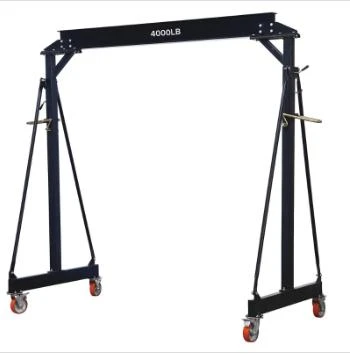Dollies Designed for Transporting Heavy Machinery and Equipment Safely and Efficiently
Dollies for Heavy Equipment Essential Tools for Safe and Efficient Transport
In the realm of heavy equipment handling and transportation, dollies play a crucial role in ensuring safety and efficiency. These specialized devices allow operators to move large and cumbersome machinery with ease, reducing the risk of injury and damage to the equipment. Understanding the different types of dollies available and their applications can significantly enhance productivity in construction sites, warehouses, and various industrial settings.
What Are Dollies?
Dollies are small, wheeled platforms designed to support and transport heavy loads, particularly machinery and equipment that are too large or awkward to move manually. They typically feature a sturdy frame, heavy-duty wheels, and a low profile to facilitate the movement of heavy items. Dollies come in various designs to accommodate specific types of loads, including flat dollies, powered dollies, and high-capacity dollies, each tailored to particular needs.
Types of Dollies for Heavy Equipment
1. Flat Dollies These are basic platforms with wheels that provide a stable surface for transporting heavy items. They are suitable for equipment that can be easily lifted and placed onto the dolly, such as small machinery and tools.
2. Powered Dollies Equipped with electric or hydraulic motors, powered dollies can automatically move heavy loads without manual pushing or pulling. These are particularly beneficial in environments where heavy equipment needs to be maneuvered frequently, such as factories and assembly lines.
3. High-Capacity Dollies Designed for exceptionally heavy loads, these dollies can bear significant weight without compromising stability. They are often used for transporting construction machinery like excavators, bulldozers, and large generators.
4. Specialized Dollies Some manufacturers produce dollies tailored for specific equipment, such as vehicle dollies for moving cars or equipment skates for heavy machines. These specialized designs ensure that the equipment is securely held and easily transported.
Advantages of Using Dollies
Utilizing dollies for moving heavy equipment offers several advantages
- Safety One of the primary benefits of using dollies is the reduction in the risk of injury. Heavy lifting can lead to musculoskeletal injuries among workers; dollies minimize this risk by allowing for the safe transport of heavy items without manual lifting.
dollies for heavy equipment

- Efficiency With dollies, the transportation process becomes considerably quicker. Workers can easily move equipment from one location to another without the need for cranes or forklifts, streamlining operations and saving time.
- Versatility Dollies can be used for a variety of applications beyond just moving heavy machinery. They can transport tools, materials, and other cumbersome items, making them essential for any heavy-duty environment.
- Cost-Effectiveness Using dollies can save companies money by reducing workplace injuries and increasing productivity. Less downtime due to injuries means that projects can be completed faster and more efficiently.
Best Practices for Using Dollies
To maximize safety and efficiency when using dollies, operators should adhere to several best practices
- Regular Inspection Before using a dolly, it is essential to inspect it for any signs of wear and tear, such as damaged wheels or a compromised frame. Regular maintenance ensures that the dolly remains safe and functional.
- Proper Loading Techniques When loading equipment onto a dolly, ensure that the weight is evenly distributed to maintain balance during transport. Avoid overloading the dolly beyond its rated capacity to prevent accidents.
- Training Operators should receive training on the proper use of dollies, including how to navigate turns, traverse obstacles, and safely stop. This training helps prevent accidents and improves overall workplace safety.
- Clear Pathways Ensure that the routes taken by dollies are free from obstacles and hazards. Keeping pathways clear allows for smoother transport and reduces the risk of accidents.
Conclusion
Dollies for heavy equipment are indispensable tools that enhance the safety and efficiency of moving large machinery. By understanding the different types of dollies, their advantages, and the best practices for their use, operators can significantly improve their daily operations. Investing in high-quality dollies can lead to long-term benefits, making them a wise choice for any business that deals with heavy equipment.
-
Unlock Seamless Relocation with Our Heavy Equipment Moving ExpertiseNewsJun.06,2025
-
Unleash Unrivaled Flexibility with Our Adjustable Gantry CraneNewsJun.06,2025
-
Unleash Heavy-Duty Efficiency with Our Industrial Gantry Crane SolutionsNewsJun.06,2025
-
Revolutionize Steel Handling with Our Magnetic Lifter RangeNewsJun.06,2025
-
Master Equipment Mobility with Premium Machinery Mover SolutionsNewsJun.06,2025
-
Elevate Your Material Handling with Magnetic Lifter TechnologyNewsJun.06,2025
-
YS Permanent Lifting Magnets: The Smarter Way to Handle SteelNewsMay.22,2025
